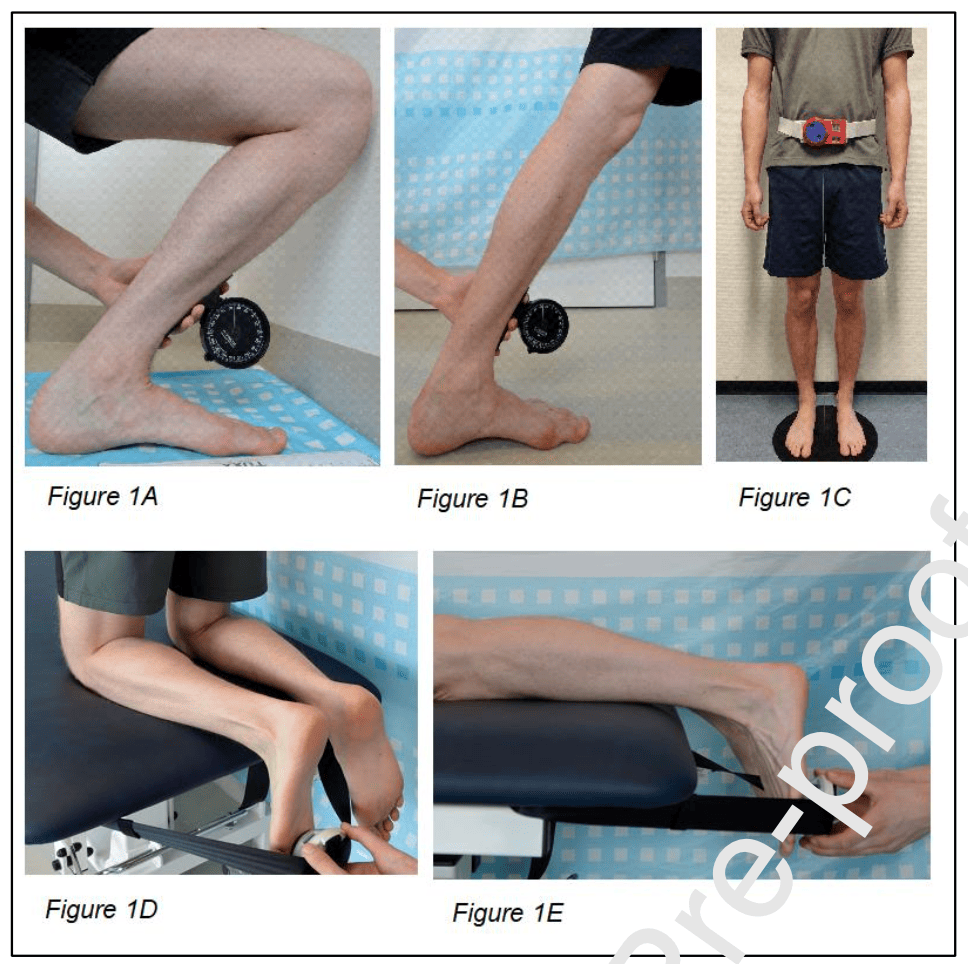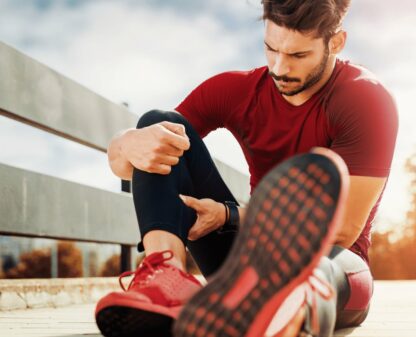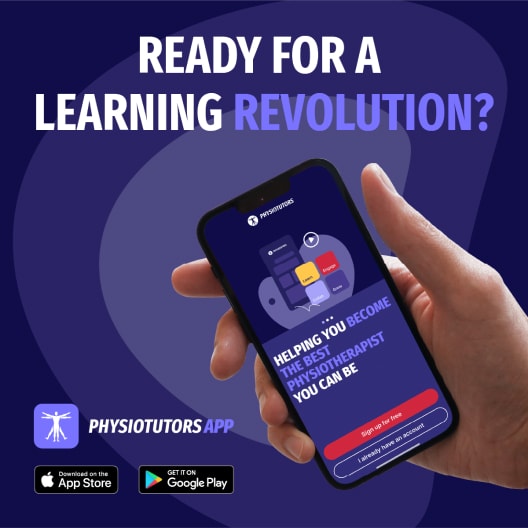Can physical tests help establish the prognosis of Achilles Tendinopathy outcomes?

Introduction
As it is characterized by pain and swelling, this leads to a reduction in weight-bearing capacity. This causes people to lower their walking and running distance. In the examination of Achilles tendinopathy, several clinical tests have been described to diagnose the condition and monitor symptoms. It is, however, unclear whether these tests carry predictive information. To estimate the prognosis of Achilles tendinopathy outcomes, the association between physical tests conducted at baseline and outcomes in the VISA-A questionnaire at 24 weeks.
Methods
This study was a secondary analysis of a randomized controlled trial (RCT) by van der Vlist et al. (2020). In the original RCT, the effectiveness of a high-volume injection without corticosteroids with a placebo injection (both combined with an exercise program) on pain and functional outcome at 24 weeks in patients with chronic midportion Achilles tendinopathy.
This RCT found no benefit for the injection compared to the placebo injection. Still, the study found significant improvements in the VISA-A questionnaire at 24 weeks in both groups. As both groups participated in the exercise program, in this secondary analysis, they were considered as one homogenous group.
The included participants had midportion Achilles tendinopathy of at least 2 months duration with unsatisfactory outcomes after having participated in at least 6 weeks of exercise training. Further, their Achilles tendon was tender on palpation and thickened.
The patients with chronic midportion Achilles tendinopathy engaged in a graded calf muscle exercise program and they completed the VISA-A questionnaire at baseline and 2, 6, 12, and 24 weeks. In addition, they performed the following physical tests:
- Ankle dorsiflexion ROM with a bent knee or an extended knee. This was measured using the weight-bearing dorsiflexion lunge test.
- Calf muscle strength was measured with the use of a hand-held dynamometer.
- Jumping height was considered a performance measure and the maximal single-leg jump distance was recorded
- Pain was measured on palpation (VAS, 0-100), and after 10 hops (VAS-10-hops).

It was studied whether the baseline values of these physical tests were associated with improvement in the VISA-A questionnaire.
Results
A total of 80 participants were included in the study. The median age was 50 years and the number of males and females was almost equally divided. These participants had symptoms for a median of 63 weeks.
The analysis revealed a significant association between baseline ankle dorsiflexion ROM (measured with the knee bent) and change in VISA-A. The beta coefficient was 0.2, which means that with every 1° increase in dorsiflexion ROM, the VISA-A increased by 0.2 points. The pain was also associated with improvements in VISA-A scores. The Beta coefficients for Pain on palpation and the pain after 10 hops were -0.2 and -0.3 respectively. These associations indicate that the results of certain physical tests at baseline may help with the prognosis of Achilles Tendinopathy outcomes at 24 weeks.
Questions and thoughts
The association between ankle ROM and the improvement in VISA-A outcomes was significant. However, we can question the relevance of this association if we do the math. Let’s say someone has a spectacular increase of 30° in dorsiflexion ROM. The associated improvement will be 0.2 points x 30° = 6 points. As the maximal ankle dorsiflexion ROM equals around 30°, even the most gains in dorsiflexion will not lead to the minimally clinically relevant difference of 7 points of VISA-A. Since this association is likely not clinically meaningful, should we aim to improve ankle dorsiflexion range of motion? Probably not.
When looking at the association between improvement in pain after 10 hops and VISA-A scores, the authors indicate that this would lead to a clinically relevant between-group difference. Let’s take the example of pain after doing 10 hops. The Beta coefficient was -0.3. The median pain reported after 10 hops was 42 and the interquartile range included scores as low as 23 to as high as 63 out of 100 on the VAS. This gives a difference of 40 points. This 40-point difference would lead to an improvement in the VISA-A score of 12 points (-0.3×40), which would be clinically relevant as it exceeds the MCID of 7 points.
Therefore, instead of focusing on improving ankle dorsiflexion ROM, it appears that focusing on decreasing pain and sensitivity should be the main focus to improve the self-reported outcomes in someone with chronic midportion Achilles tendinopathy. Important to acknowledge is that this study found no association between baseline strength and change in VISA-A. So it doesn’t matter how weak or how strong someone is at the beginning of the rehabilitation for chronic midportion Achilles tendinopathy. Whatever methods you can find to decrease the irritability, should be your main focus.
Talk nerdy to me
The VISA-A is a patient-reported tool that is commonly used for assessing the severity of Achilles tendinopathy. However, the fact that it is associated with the VAS pain scores is not that surprising since 5 out of the 8 questions of the VISA-A questionnaire ask about pain.
The physical tests were always conducted in the same order. Starting with a warm-up where the participants were asked to walk up and down 4 flights of stairs, followed by the weight-bearing lunge test, strength assessment, maximal single-leg jump, and palpation for pain provocation. We can assume that the irritability and pain would increase further in the testing procedures. This may therefore have created larger pain scores, hence possibly also the significant associations found. It is possible that if the pain was assessed before the other tests were conducted, the scores would have been lower and possibly not associated with the improvements in VISA-A. It is also possible that these findings reflect regression to the mean, as it is known that higher scores will more likely flatten to lower scores, while already low scores do not always have much room for improvement.
Both groups from the earlier RCT by van der Vlist in 2020 were taken together in this study and considered homogeneous. At baseline in this RCT, groups were comparable and the results indicated that the high-volume injection without corticosteroids had no added value to an exercise program in patients with chronic midportion Achilles tendinopathy. We can assume that the decision to analyze this group as one can be justified.
Take home messages
Ankle dorsiflexion range of motion measured with the knee bent and pain provocation upon palpation and after 10 hops are clinical tests easy to measure at baseline and may help establish the prognosis of Achilles Tendinopathy outcomes at 24 weeks. However, the ankle ROM measurement is likely not clinically relevant. There appears to be an overlap in the pain on palpation and the VISA-A questionnaire where 5 out of 8 questions also ask about pain and this may have played a role in the found associations.
Reference
Additional reference
WHAT TO LOOK FOR TO PREVENT HAMSTRING, CALF & QUADRICEPS INJURIES
Whether you’re working with high-level or amateur athletes you don’t want to miss these risk factors which could expose them to higher risk of injury. This webinar will enable you to spot those risk factors to work on them during rehab!



